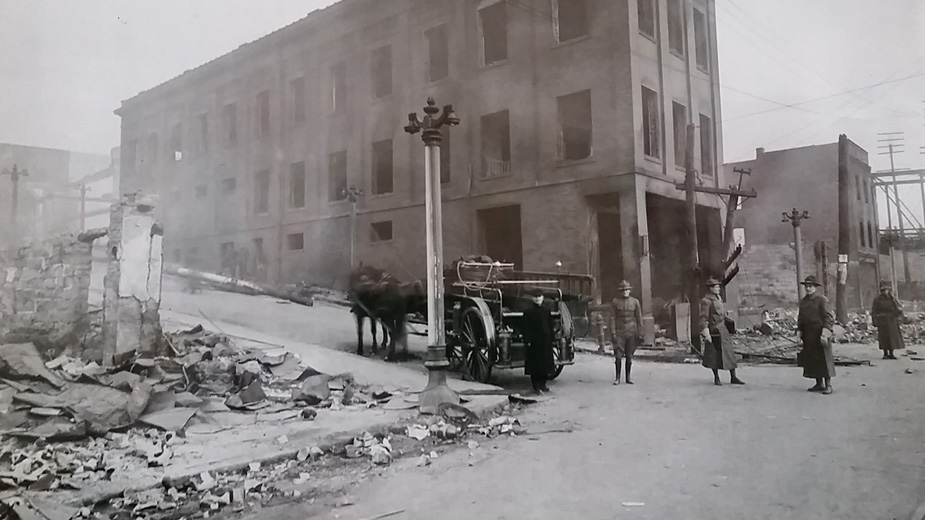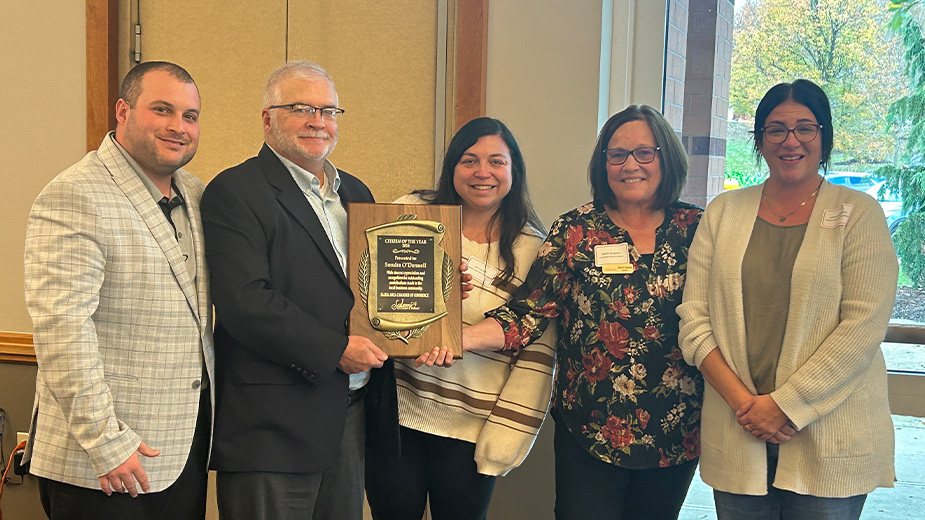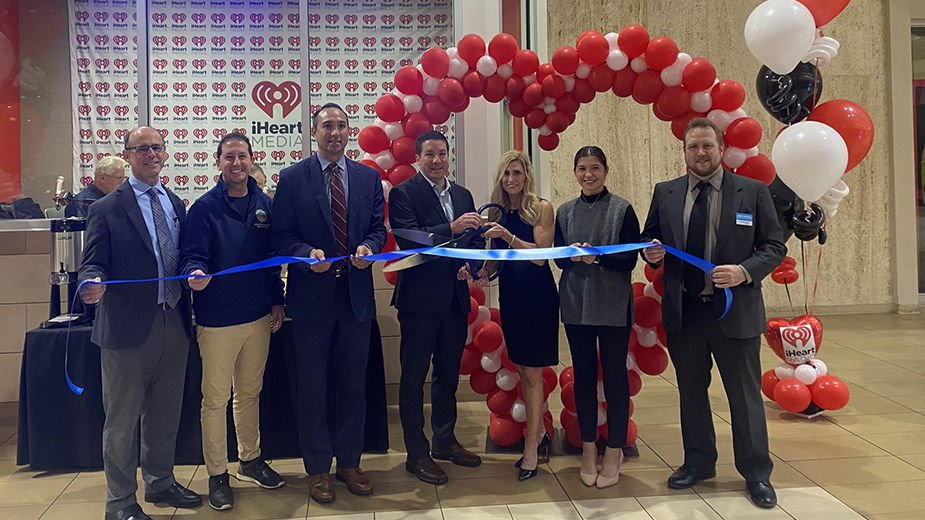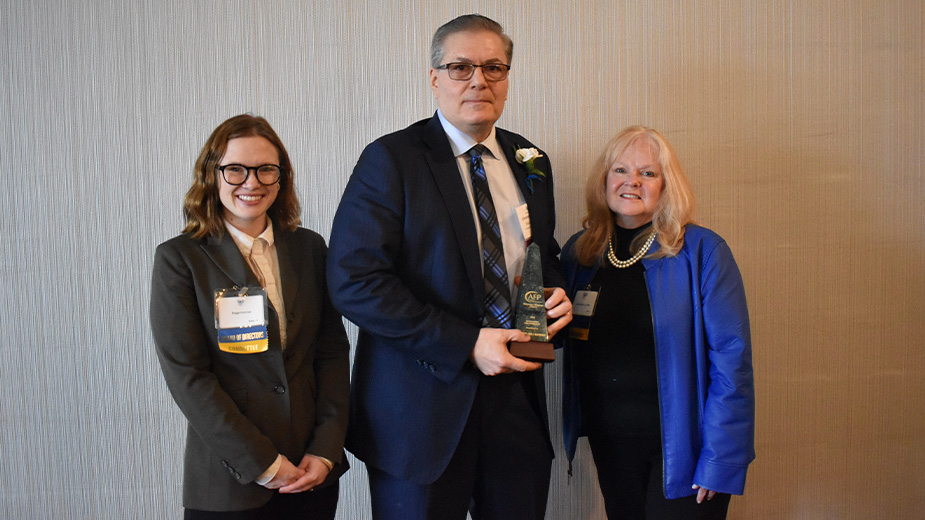Symposium Commemorates 1916 East Youngstown Riots
YOUNGSTOWN, Ohio – Historians, labor leaders, and elected officials gathered Friday to commemorate a seminal event in U.S. labor history: the 1916 steel strike and subsequent riot in East Youngstown.
“It’s something to remember – the reasons why the strike happened and the consequences that in many ways shaped the lives of those who lived throughout the area,” said Martha Pallante, chairwoman of the history department at Youngstown State University.
The event attracted more than 100 to the Youngstown Historical Center for Industry and Labor, which the YSU history department manages for the Ohio Historical Society.
One hundred years ago, East Youngstown – today, Campbell – was a city of 5,000 people, many of them employed at Youngstown Sheet & Tube Co.’s plant there.
“In late 1915, there were tens of thousands of people involved in our region’s iron and steel industry,” said Bill Lawson, director of the Mahoning Valley Historical Society. That year the country enjoyed a strong national manufacturing economy, buoyed by the United States’ assistance to Great Britain and France during World War I.
As such, production in the local iron and steel industry soared, but pay for unskilled workers – still reeling from a 9% wage cut the year before — remained flat at the common rate of 19.5 cents an hour, Lawson said. “They wanted a raise to 25 cents per hour, they wanted time and a half for overtime, and they wanted double time for those who worked on Sundays,” he said.
When workers’ requests were met with silence – first from the Republic Iron and Steel Works in Youngstown – employees in late December 2015 started to walk off the job. “Over the next week and a half, the strike spread to other steel companies,” including Sheet & Tube’s operations in East Youngstown.
The underlying social conditions in this city presented an explosive situation already, Lawson noted. In just 15 years, East Youngstown grew from a population of zero to more than 5,000, causing incredible stress on housing, infrastructure and the simple amenities necessary to sustain the population, of which 80% were male and most of them foreign-born.
Plus, low wages made it nearly impossible to make ends meet, Lawson noted. “The common laborer couldn’t afford it,” he said.
On the afternoon of Jan. 7, 1916, more than 1,000 strikers and onlookers gathered along Wilson Avenue near the north entrance of East Youngstown’s Sheet & Tube plant. There, they were met with armed company and contract security guards determined to keep strikers from crossing the bridge into the plant.
What many in the crowd did not know was that earlier, the presidents of Republic, Sheet & Tube, and Youngstown’s Brier Hill Iron Works announced that they had agreed to a common wage increase to 22 cents and hour, Lawson said.
But anger had already boiled over in East Youngstown. “There were words exchanged, there were projectiles thrown, and a couple of shots were fired,” he said.
Then, a volley of shots rang from the guards’ rifles into the crowd. When the crowd dispersed, many moved on the company’s employment office at the front of the bridge on Short Street in search of a “blacklist,” a list of employees that companies singled out as union sympathizers.
Whether the blacklist was discovered is unknown, but the crowd set fire to the employment office and then turned its rage on East Youngstown’s business district.
“You literally had mob rule in East Youngstown that night,” Lawson said, as buildings went up in flames and businesses – mostly taverns – were looted. Local law enforcement wasn’t equipped to handle the mob, and rioters hampered fire brigades’ efforts to douse the flames by cutting hoses.
That evening, Ohio Gov. Frank Willis called in 24 companies of the Ohio National Guard to restore order. By morning, the riot had claimed three lives, left dozens more wounded, reduced 34 buildings to charred rubble, and cost more than $1.5 million worth of damage.
More than 200 were arrested, Lawson said, and the story made national headlines. Some of these publications reprinted rumors that those responsible for the riots were actually foreign agents of the Austro-Hungarian Empire, since many of the workers had emigrated from Eastern Europe.
Others placed the blame squarely on organized labor. James Campbell, president of Sheet & Tube, told the New York Tribune “that the real devils in this situation are the men sent here by the American Federation of Labor.”
A grand jury charged with hearing incidents involving the East Youngstown disturbance sought to determine who was responsible and what the main factors were behind the riot, said Thomas Leary, professor of applied history labor history at YSU.
More than 500 witnesses were called to testify in more than 200 different cases, the majority of which he believes were related to the East Youngstown riot. Despite the work of a graduate student who 10 years ago discovered a list of those who were arrested in connection with the riots, it’s still difficult to pin down just who these people were and where they worked, Leary continued.
For example, it’s hard to determine whether those who committed crimes that evening were employed at Sheet & Tube since there are no company employment rosters dating to that period.
“These are the kinds of records-linkage issues that can open up our understanding of not just what we know of the narrative of the events, but of the participants as well,” Leary said.
As predicted, the grand jury indicted individuals it claimed committed violations such as arson, rioting and burglary, Leary noted. However, in an astonishing twist, the grand jury also indicted Judge Gary, the head of U.S. Steel Corp., and six other major steel companies, including Sheet & Tube, Republic, and the Brier Hill Steel Co.
The grand jury opted to indict the corporations under an Ohio law called the Valentine Trust Act, a state surrogate of the federal Sherman Anti-Trust Act, on the grounds that the companies colluded to fix the common wage of workers, Leary said. Thus, the companies violated the law’s prohibition of “conspiracies to restrain trade.”
“The underlying cause of the East Youngstown riot, according to the grand jury, was an illegal conspiracy among steel companies to fix or regulate the supply of steel and the wages of labor, “ Leary said.
The charges against the corporations didn’t stick. Three weeks after the grand jury issued its final report on March 8, 1916, the indictments against the major companies were dismissed. Defense attorneys argued that responsibility of regulating commerce fell under the jurisdiction of the U.S. Congress and not the states.
Since those arguing on behalf of Mahoning County didn’t prove that the business activity among the companies was limited to the state where the riot took place, the court ruled that the Valentine Act didn’t apply, Leary said.
Dave McCall, director of District 1 of the United Steel Workers, said its imperative that the public learns from and understands these events in business and labor history.
“The importance of history is to recognize those who sacrificed so much ahead of us,” McCall said at the symposium. “It really is about our future and us being responsible for our own work and our own jobs.”
U.S. Sen. Sherrod Brown, D-Ohio, who also spoke at the symposium, said it’s important that folks remember the benefits organized labor has brought to workers since the early days of industrialization.
There’s still much more work to be done, Brown reminded the audience.
Today, he said, thousands of workers are not adequately compensated because they work for private contractors hired by larger concerns, and lack representation.
“You see workers who push wheelchairs at the airport,” the senator pointed out. “Some of them make sub-minimum wage and you’re supposed to tip them,” Brown said. “People don’t always know that.”
Big companies today outsource food service, custodial work and security, whose employees aren’t represented by organized labor. “No wonder wages are stagnant,” he said.
Pictured: The Ohio National Guard keeps the peace following the 1916 riot in what was then East Youngstown. Photo courtesy of the Mahoning Valley Historical Society.
Copyright 2024 The Business Journal, Youngstown, Ohio.



